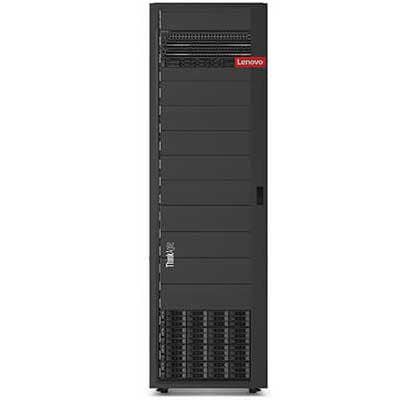5 Things To Look Out For In Lenovo's Q2 Results

Bouncing Back
The first half of Lenovo's 2018 fiscal year has been turbulent, and the market will get a look at just how choppy the waters have been Thursday when the Beijing, China-based firm reports its second quarter results.
Lenovo is looking to bounce back from a first quarter in which it swung to its first quarterly loss in nearly two years. The company in recent months has faced challenges in key markets, as well as significant leadership change.
The company, which does nearly all of its business through the channel, also made changes in October to its channel program that were met with skepticism by partners and announced that it would lay off about 2 percent of its workforce.
Lenovo spent the better part of the last four years atop the global PC market, but saw that lead evaporate earlier this year. The company also launched a rebranded data center product lineup earlier this year, but saw worldwide server shipments decline significantly.
The company, which is traded on the Hong Kong stock exchange, is scheduled to report its second quarter results Thursday. Here are five things to keep an eye on.

Channel Changes
On top of its weakening position in the global PC and data center markets, Lenovo sparked partner uproar in October when it made rebate and pricing changes designed to offset ongoing increases in memory and component costs. The changes, which reduce back-end rebate payments and do away with the pricing structure that allowed distributors to offer discounts to partners while maintaining gross margins, will drive customers toward competitors like Dell and HP Inc., some partners argued. Watch for any further pricing changes that help Lenovo contend with rising memory and component costs and potentially impact the channel.

Top Line, Bottom Line
Analysts were expecting Lenovo's first quarter profit to decline, but the $72 million loss the company reported came as a surprise. In the same period the prior year, the company booked a $173 million profit. Revenue for the first quarter was about $10 billion, flat with the prior year. Lenovo executives said that the company is positioning itself for growth, especially as a next-generation data center vendor with end-to-end capabilities. Watch for signs that the data center business has begun to gain any significant traction in key markets.

PC Pressure
PCs are a key component of Lenovo's strategy, and have been one of the company's most successful product lines. However, the company's PC business has been losing its grip on world domination this year. Watch for any indication that it could be resurgent, or for any plans executives may have to regain a leadership position. Lenovo's domination of the global PC market began in 2013, but the last couple of years have not been easy. The company's PC shipments declined in the third quarter of the calendar year for the eighth time in the previous 10 quarters, and it trailed rival HP Inc. for the worldwide lead, according to research firm Gartner Inc. In the U.S. market, Lenovo's PC shipments fell more than 25 percent, the steepest year-over-year decline since its acquisition of IBM's PC business in 2005, according to Gartner.

Designs On The Data Center
It'll be interesting to hear if Lenovo sees any early success with its newly rebranded data center lineup. The company rebranded its data center products as ThinkSystem and its plug-and-play software-defined products as ThinkAgile in late June. Until then, the company had struggled to develop a unified strategy for the data center after acquiring IBM's x86 server business about three years ago. In August, North America President Emilio Ghilardi stepped down. New branding or not, Lenovo has to overcome the fact that its worldwide server shipments fell more than 38 percent year-over-year in the second quarter of the calendar year, according to Gartner.

Cutting Crew
Lenovo said in early October that it would cut about 2 percent of its 52,000 employees as part of an effort to become more cost-efficient and focus on key growth areas like its mobile and data center businesses, as well as artificial intelligence and big data efforts. Watch for signs that more cost-cutting measures could be coming and whether they will affect the company's channel operation.